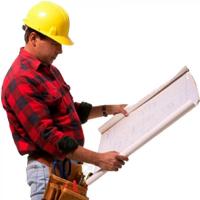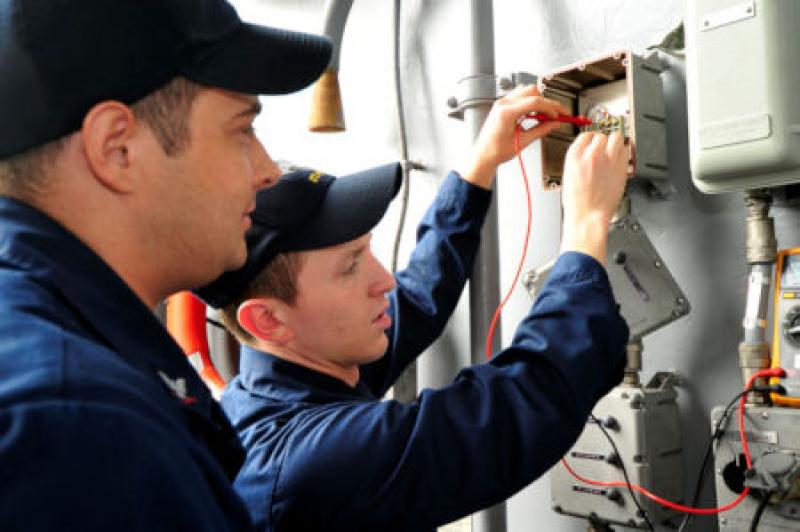4 Safety Tips for Handling Electrical Components in Your Home
by Guest on Jul 7, 2017
Fires caused by electrical faults account for a whopping $868 million in property damage, as well as thousands of injuries and at least 480 deaths every year. The electrical system in the home is one of the most poorly understood for many homeowners, who approach it with the DIY spirit only to suffer the consequences of incorrect installations. Electrical fires are deadly because they are often odorless and invisible. Overheated/improperly installed components can smolder for months before finally igniting.
This article highlights five tips that could make the difference between losing and saving your home.
1. Understand your limits
This is perhaps the most important tip of all. Even if you’re handy around the home and you can handle lots of other difficult problems, your electrical wiring system should only be handled by a qualified electrician. You must check their credentials to confirm that they are licensed electricians before allowing them to carry out repairs in your house. Remember that your electrical system is connected throughout the home and a small miscalculation in one portion can have disastrous consequences in another part of the home.
If you must handle projects on your own, and some can be done easily – changing light bulbs, plugs, fuses, sockets, etc. – remember to turn off the correct mains switch so that you’re not working on live wires. Call for help if you’re not sure about anything, anything at all.
2. Understand what fuses and circuit breaker do
Circuit breakers and fuses are installed to protect a circuit’s wiring more than the appliances connected or loads carried. What this means is that breakers and fuses step in to open a circuit if the current is high enough to cause damage to the wires. However, this may be ineffective if the current is way too high, and your appliances may still get damaged. Therefore, it’s important to adhere to the recommended load for each circuit to reduce the likelihood of overloading a single circuit.
3. Understand how extension cables work
Extension cords/trailing sockets have different electrical capacities and ratings. Many homeowners don’t even know this, much less apply it. Any trailing socket connected to a major appliance – refrigerator, AC units, space heaters, computers, etc. – should be sufficient to handle the load. Otherwise, the trailing socket may overheat and become an electrical fire hazard. Also, avoid running cables in places where heat cannot dissipate properly, such as under furniture or rugs.
4. Replace older equipment with safer equipment
If you have an older home and have a lot more appliances than the former owner, talk to an electrician to inspect the load capacity of your house just in case you need to upgrade wires. Also, older homes used to have aluminum wiring, which easily expands when heated and can result in loose connections. Such wiring needs to be replaced with copper wiring. Also, talk to them about installing GFCI outlets which can automatically cut power in the event of a ground electrical fault. AFCIs can detect faults in wiring and breaker circuits if there’s likely to be a fire.
Popular Articles
Three Places to Spend Money on the Exterior of Your Home
When you have the exterior of your home remodeled, you are investing, time, energy and convenience into the project and you want to make sure that...
104844 Views
Homemade Headboards-Make an Upholstered or Wooden Headboard
Homemade headboards can add a lot of personality to any bedroom. They can be coordinated with existing furniture and room decor or they can be the...
80111 Views
When to Use a Brush, Roller or Sponge Brush
Brushes are a good choice for painting trim and woodwork. They are also useful for cutting in the edges around the top and bottom edges and corners...
72772 Views
Creating a Cottage Kitchen with Bead Board
Kitchen decor can range from modern and bold to elegant and elaborate by using strategic kitchen pieces. One of the most popular decorating trends...
58538 Views
Gas Fireplace Diagnostics and Troubleshooting
Follow these steps for diagnosing and troubleshooting Gas Fireplaces repairs. For the average DIYer, this may seem intimidating, depending on the...
35578 Views
Latest Articles
How Much Does it Cost to Take a Bath?
Plumbers know that a bath may seem like a relaxing luxury, but the real cost extends far beyond your water bill. The average soak uses 35 to 50...
on Apr 8, 2025
10 Concrete Patio Ideas on a Budget
A concrete patio can be a game-changer for your outdoor space. It is durable, versatile, and can be customized to fit your style. But what if you...
on Mar 25, 2025
Tips for Creating a Stunning Personalized Photo on Canvas
Order the unique beauty of a personalized photo on canvas and bring your memories to life. With a customized photo on canvas, you can transform...
on Mar 7, 2025
Best Areas to Buy Property in Singapore for Long-Term Growth
Singapore's real estate market remains one of the most stable and lucrative in the world. With limited land supply, strong governmental...
on Feb 18, 2025
Troubleshooting Excess Water in Your HVAC Secondary Condensate Drain Pan
When maintaining your air conditioning system, it is easy to overlook the condensate drain pan - until excess water starts pooling in places where...
on Jan 12, 2025
Featured Articles
What Type of Licensed Contractor Should You Hire?
on Feb 28, 2017
Hire Contractors / Estimates

Looking for a specialty project? There are many types of contractors available for your home improvement needs. Finding the right type of...
Sponsored Articles
Best Areas to Buy Property in Singapore for Long-Term Growth
on Feb 18, 2025
Real Estate / Finance

Singapore's real estate market remains one of the most stable and lucrative in the world. With limited land supply, strong governmental...
Actions
Top Categories
- Garden / Landscaping / Patio — 264
- Kitchen / Bathrooms — 240
- Real Estate / Finance — 203
- Appliance / Repair — 186
- Interior Design / Decor — 184
- HVAC / Air Conditioning — 148
- Cleaning / Maintenance — 144
- Improvements / Remodeling — 131
- Plumbing / Basements — 118
- Floors / Tile / Hardwood — 116
- Doors / Garages — 113
- Safety / Security — 113
Articles Archive
More DIY Articles
How To Renovate Your Bathroom in Your Airbnb
If you are looking to renovate your bathroom in your Airbnb rental, there are a few things you should keep in mind. Renovating a bathroom can be a...
5 Tips for Refreshing Your Bathroom
The daily steam and moisture in your bathroom make it a breeding zone for mold and mildew, increasing the risk of respiratory illnesses and...
How to Create an Ideal Space for Growing Plants
Planting in the garden or bringing plants into the house are two excellent ways to improve your quality of life at home. Those who live with an...
Tropical Landscaping Ideas for the Homeowner
There are many different types of landscaping styles. Here are some common landscaping ideas in humid weather. These are several reasons why people...
Real Estate Investment for Future Generations
Purchasing a home is not simply a financial commitment. It is also an excellent way to start accumulating your wealth. Your home is also a...

